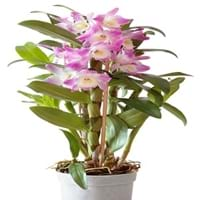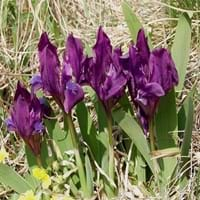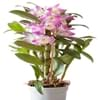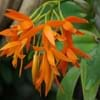Life Span
Perennial
Perennial
Origin
Southern Asia, Southeastern Asia
Eastern Europe
Types
Not Available
Not Available
Habitat
Subtropical climates
Terrestrial
USDA Hardiness Zone
12-15
4-9
AHS Heat Zone
Not Available
9-1
Sunset Zone
Not Available
1a, 1b, 2a, 2b, 3a, 3b, 4, 5, 6, 7, 8, 9, 10, 11, 12, 13, 14, 15, 16, 17, 18, 19, 20, 21, 22, 23, 24
Habit
Clump-Forming
Clump-Forming
Flower Color
White, Yellow, Gold, Light Pink
Yellow, Lavender, Blue Violet
Flower Color Modifier
Bicolor
Bicolor
Fruit Color
Non Fruiting Plant
Not Available
Leaf Color in Spring
Green, Dark Green
Green, Sea Green
Leaf Color in Summer
Green, Dark Green
Green, Sea Green
Leaf Color in Fall
Green, Dark Green
Green, Sea Green
Leaf Color in Winter
Green, Dark Green
Light Green
Leaf Shape
Long Elliptic
Lanceolate
Plant Season
Spring, Summer, Fall, Winter
Spring, Summer
Sunlight
Partial Sun, Partial shade
Full Sun, Partial Sun
Type of Soil
Not Available
Loam, Sand
The pH of Soil
Acidic, Neutral
Neutral
Soil Drainage
Well drained
Well drained
Bloom Time
Early Spring, Late Winter
Spring, Late Spring, Early Summer
Tolerances
Cold climate, Heat Tolerance
Drought
Where to Plant?
Container, Ground, Pot
Ground
How to Plant?
Seedlings, Stem Planting
By dividing rhizomes, tubers, Seedlings
Plant Maintenance
Low
Medium
Watering Requirements
Do not water frequently, Medium, Never Over-water, Water when top layer of soil becomes dry
Average Water Needs, Do Not over Water
In Summer
Lots of watering
Lots of watering
In Spring
Moderate
Moderate
In Winter
Average Water
Average Water
Soil pH
Acidic, Neutral
Neutral
Soil Type
Not Available
Loam, Sand
Soil Drainage Capacity
Well drained
Well drained
Sun Exposure
Partial Sun, Partial shade
Full Sun, Partial Sun
Pruning
Remove damaged leaves, Remove dead leaves
Remove damaged leaves, Remove dead branches, Remove dead leaves
Fertilizers
fertilize every 2-3 weeks while growing
All-Purpose Liquid Fertilizer
Pests and Diseases
Red blotch
Red blotch
Plant Tolerance
Drought
Drought
Flower Petal Number
Single
Single
Foliage Texture
Medium
Coarse
Foliage Sheen
Matte
Matte
Attracts
Not Available
Hummingbirds
Allergy
Avoid during Pregnancy
Skin irritation
Aesthetic Uses
Beautification, Landscape Designing, Showy Purposes
Showy Purposes
Beauty Benefits
Good for skin and hair
Not Available
Environmental Uses
Air purification, Food for insects
Air purification
Medicinal Uses
Cough, Fever, Immunity, tuberculosis, Vomiting
No Medicinal Use
Part of Plant Used
Flowers, Leaves, Stem
Not Available
Other Uses
Can be made into a herbal tea, Decoration Purposes, Showy Purposes, Used as Ornamental plant, Used for its medicinal properties
Used as Ornamental plant
Used As Indoor Plant
Yes
No
Used As Outdoor Plant
Yes
Yes
Garden Design
Container, Hanging Basket, Houseplant, Rock Garden / Wall, Tropical
Alpine, Edging, Mixed Border, Rock Garden, Wall
Botanical Name
DENDROBIUM farmeri
IRIS pumila
Common Name
Dendrobium, Farmer's Dendrobium, Sentinel Orchid
Dwarf Iris
In Hindi
Dendrobium
Dwarf Iris
In German
Dendrobium
Zwergiris
In French
Dendrobium
Dwarf Iris
In Spanish
dendrobium
Enano Iris
In Greek
Dendrobium
νάνος Ίρις
In Portuguese
dendrobium
Dwarf Iris
In Polish
Dendrobium
Dwarf Iris
In Latin
dendrobium
Iris Dwarf
Phylum
Magnoliophyta
Magnoliophyta
Class
Liliopsida
Liliopsida
Order
Asparagales
Liliales
Family
Orchidaceae
Iridaceae
Clade
Angiosperms, Monocots
Angiosperms, Monocots
Tribe
Podochileae
Irideae
Subfamily
Epidendroideae
Iridoideae
Number of Species
Not Available
Season and Care of Dendrobium and Dwarf Iris
Season and care of Dendrobium and Dwarf Iris is important to know. While considering everything about Dendrobium and Dwarf Iris Care, growing season is an essential factor. Dendrobium season is Spring, Summer, Fall and Winter and Dwarf Iris season is Spring, Summer, Fall and Winter. The type of soil for Dendrobium is Not Available and for Dwarf Iris is Loam, Sand while the PH of soil for Dendrobium is Acidic, Neutral and for Dwarf Iris is Neutral.
Dendrobium and Dwarf Iris Physical Information
Dendrobium and Dwarf Iris physical information is very important for comparison. Dendrobium height is 15.20 cm and width 20.30 cm whereas Dwarf Iris height is 10.20 cm and width 15.20 cm. The color specification of Dendrobium and Dwarf Iris are as follows:
Dendrobium flower color: White, Yellow, Gold and Light Pink
Dendrobium leaf color: Green and Dark Green
Dwarf Iris flower color: Yellow, Lavender and Blue Violet
- Dwarf Iris leaf color: Green and Sea Green
Care of Dendrobium and Dwarf Iris
Care of Dendrobium and Dwarf Iris include pruning, fertilizers, watering etc. Dendrobium pruning is done Remove damaged leaves and Remove dead leaves and Dwarf Iris pruning is done Remove damaged leaves, Remove dead branches and Remove dead leaves. In summer Dendrobium needs Lots of watering and in winter, it needs Average Water. Whereas, in summer Dwarf Iris needs Lots of watering and in winter, it needs Average Water.





